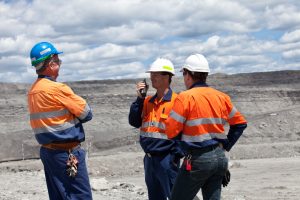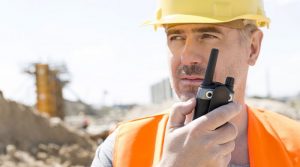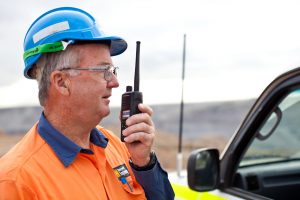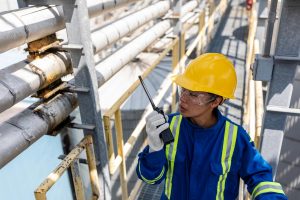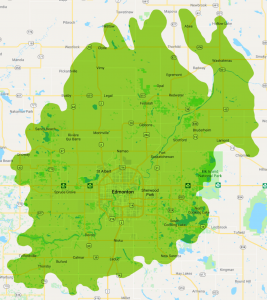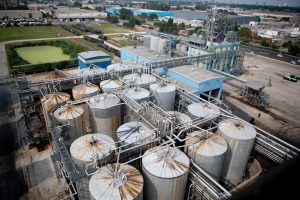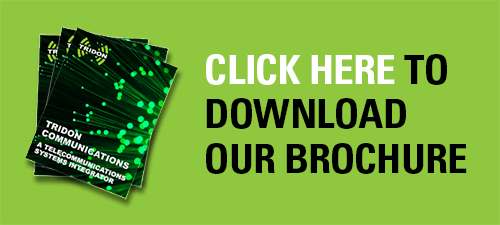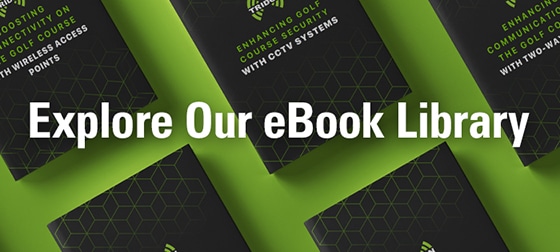One of the most frequently asked questions two-way radio users ask is about the range, and it’s completely understandable. They have a team that has to communicate across a wide area and reliable communications are critical to relaying information, be it about the status of a project or emergencies.
Think about courier services, as an example. With drivers moving all over the Greater Edmonton Area, dispatchers will need to be in regular contact. That way they can stay apprised of any changes or delays to a delivery schedule, vehicle breakdowns, or accidents. But without adequate transmit range, this communication could be challenging, at best.
Several factors can impact the range of two-way radio communications:
- The power (wattage) of the radio
- The radio’s antenna design
- The terrain in the area – hills, ditches, mountains, and so on.
- Construction material like steel, concrete, and glass
- Whether the radio user is indoors or outdoors
If you want your team to be able to transmit across long distances, or even inside a multi-story building, then you need to consider these factors when you rent or buy two-way radios. So, let’s get into the details.
Or, if you’re in a hurry, click here to get right to the solution.
How Power Affects the Range of Two-Way Radios
Professional and commercial two-way radios operate on between 1 and 5 watts of power. Generally speaking, a higher wattage means your radio will transmit farther, but you want to keep your desired coverage area in mind. Otherwise, you could end up interfering with communications for another business.
How Antenna Design Can Impact the Range of Two-Way Radios
Reviewing, and making any necessary improvements can make a difference in the range of your communications. Just think about how your signal travels: In a straight line (line of sight) from transmitter to receiver (i.e. one radio to another). Any obstacles or barriers can limit how far your signal travels without getting blocked or distorted. A common way to get around these obstacles is by placing the antenna as high as possible, so it has a clear line of sight.
How Obstacles – Like Building Material and Terrain – Can Impact Range
Natural obstacles, like hills, mountains, ravines, and forests, can limit your radio’s range and interfere with the signal. That’s because these obstacles get in the way of the signal’s path (remember, they travel in straight lines). Man-made obstacles, like concrete, steel, and glass, interfere with line of sight, especially in multi-story buildings where every floor means another layer of concrete and steel to get in the way of your signal.
So, What Are the Solutions?
Regardless of the factors, you need a two-way radio system with enough range to support your team and your project needs. So, here are some of the solutions that can help.
Make Sure You’re Using the Right Frequency Band
Generally, if your team is working outdoors, VHF radios are the way to go; if they’re working indoors, UHF radios are better suited.
VHF radios are designed for longer-distance communications. While they struggle with barriers like concrete and steel, the longer wavelengths of a VHF transmission can travel a greater distance before they degrade. So, if you have a fleet of courier vehicles making deliveries in the Greater Edmonton Area, equipping those vehicles with VHF radios is a smart move.
On the other hand, if your team is working indoors (for example, in a Calgary high-rise hotel). UHF radios would be a better choice. The shorter wavelengths of a UHF radio transmission give them the ability to penetrate through concrete, steel, and glass far more effectively than VHF radios. That means Custodial staff on the top floor of that Calgary hotel could easily communicate with the Hospitality staff on the main floor.
Consider Using A Repeater or a Bi-Directional Amplifier
Repeaters are typically used in outdoor settings to extend the range of two-way radios by several kilometers. Normally, a radio signal would weaken once you went past the edge of the coverage area (the furthest reach of a radio’s range), and the message would become unintelligible. But a repeater can boost the strength of this signal and help it travel farther. It does this by capturing it before it deteriorates and retransmitting it (essentially, repeating the message) to the intended recipient. The end result is a two-way radio system with a longer range and a team that can communicate across a wide-spread area of operation, like the Greater Edmonton Area or an Oil Sands mine site.
Bi-directional amplifiers (BDA’s) perform a similar function when used in buildings. Remember, the concrete and steel typical in major construction projects can block radio signals as they travel from the bottom floor to the top. But a BDA can get around that problem.
It does this by acquiring the signal via an antenna mounted near the ceiling of one story of the building, transmitting it to a signal booster, and re-broadcasting it via an antenna mounted on another floor of the building. BDA’s are often used in stairwells, parking garages, or multi-story office tower or hotel. And once again, your team gets reliable communications.
Use Digital Two-Way Radios
Digital two-way radios offer many advantages over the analog predecessors, and one of them is signal integrity. As an analog signal approaches the outer limits of its coverage area (transmit range) the signal gets weaker and weaker. Without a repeater to boost the signal, it could be extremely difficult to understand what someone is trying to say. Digital radios, on the other hand, offer the same level of signal quality throughout the coverage area. So, even if the transmitting and receiving radios are at opposite ends, the message will be received loud and clear.
Sign on to Tridon Connect
Tridon Connect is a private, wide-area digital two-way radio communications network. It has been designed by our in-house engineers and our RF technicians maintain it on a regular basis. The network covers the Greater Edmonton Area and the Regional Municipality of Wood Buffalo, supporting Fort McMurray, Fort McKay, the Oil Sands and several other communities and operations in the region. The maps shown here gives you a better idea of the entire coverage area.
If you’re looking for long-range radio communications, but you don’t have the time or budget to build the system from scratch, Contact Us about Tridon Connect.
Getting Started
Getting the most range out of your two-way radio takes a bit of planning, but it is entirely achievable. When you choose the right radio and pair it with the best antenna design and support infrastructure, your team will be able to communicate with ease, even if they are separated by a considerable distance.
If you’re looking for more information on how to maximize the range of your radio, Contact Us. We’re here to help.
Tridon is a full solution Telecom Systems Integrator with CSA certification and licensed by APEGA. Our Engineering, Service and Tower Divisions collaborate with customers to build engineered solutions including communications systems design, tower inspections and co-location, wireless broadband, fiber optic cabling, site security, and two-way radio communication.

